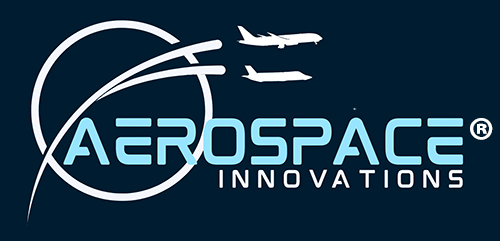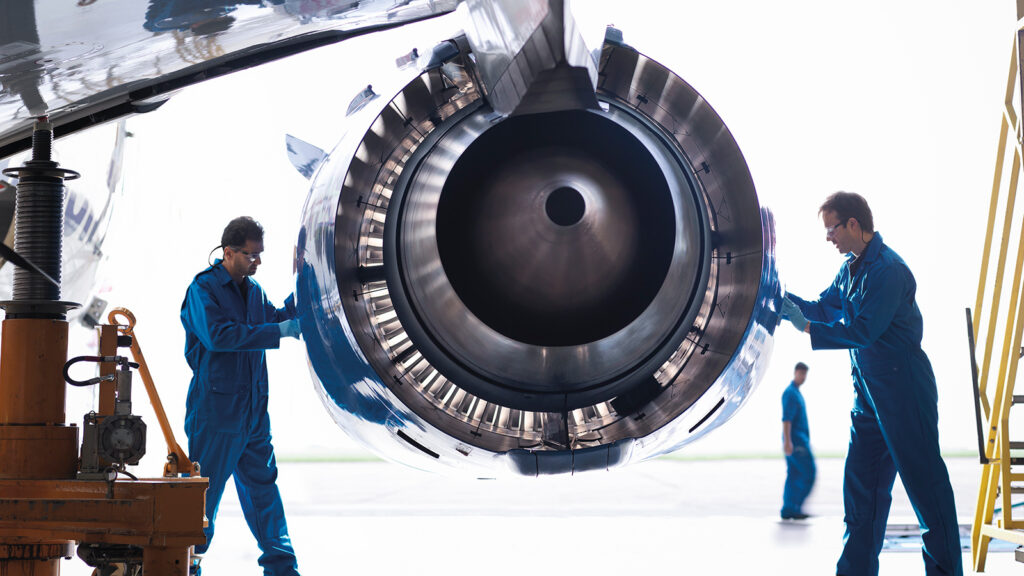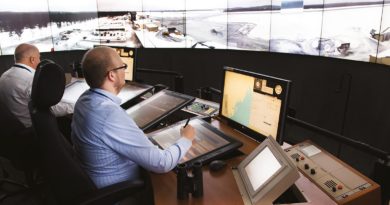The Power of Engine MRO Modules
Aircraft engines are both essential and extraordinarily complex. This is why MROs pay particular attention to these engines during servicing, and why the makers of MRO software have created ‘Engine MRO Modules’ to assist them in this work.
A Truly Complex Process
Rob Mather is Vice President of Aerospace and Defence Industries at IFS. Its MRO software solutions cover airframe heavy maintenance, component repair, OEM aftermarket services, and engine maintenance, which it delivers through its IFS Complex Assembly MRO (CAMRO) module.
“Gas turbine engines are extremely complex machines,” said Mather. “What separates engine maintenance from airframe and component maintenance is the need to disassemble, inspect, and reassemble each of the thousands of components in these engines.”
“It is the orchestration of this incredibly complex process that sets engine MRO modules apart,” he continued. “This software must also successfully mitigate the cost risks from disassembly through reassembly and testing, while ensuring the delivery of high performing engines within a minimized turnaround time and complying with all regulatory requirements.” As well, engine MRO modules need to align the lifespans of an engine’s various components, to maximize the overall useful life of the engine.
Sophisticated Solutions
To address this wide range of engine servicing needs, MRO software suppliers have developed some truly sophisticated solutions.
A case in point: “IFS has an industry-tailored CAMRO solution that deals with all these requirements while providing end-to-end support from shop visit work scoping through to redelivery and all supporting processes in one complete package,” Mather said. Hence, by using the IFS CAMRO software module, MROs are able to identify potential problems, manage material flow, and maintain complete control over the engine servicing process.
Ramco Systems takes a different approach. Its Ramco Aviation Software 6.0 “addresses the end-to-end business requirements for engine MROs,” said Saravanan Rajarajan, the company’s AVP and Head of Consulting for Aviation, Aerospace & Defense. “The key engine-specific modules of Ramco Aviation Software include the digitized MRO Contract module, the Engine Engineering module, the Engine Workscoping module, the Work Execution module, and the Kitting and Sourcing module.”
Then there’s QOCO Systems. Their SaaS (Software-as-a-Service) products are designed to connect airline operators M&E systems to engine MROs’ own ERP/M&E-systems. This feature allows airlines to check the progress of their aircraft engine repairs in real time. “Our main product for this is Aviadex,” said Esa Tuokko, the company’s Engagement Director. “Aviadex provides a granular overview of an engine’s duty cycles, and calculates which parts, LLPs and rotables need to be changed during shop visits. This allows an MRO to buy the parts they need before an engine comes into their facility.”
Finally, we turn to Ultramain Systems. This company’s ULTRAMAIN MRO software platform comes with a suite of engine-specific MRO software modules. “These modules — Engine Planning, Engine Scheduling, and Engine Execution — are designed to manage the full lifecycle of engine maintenance within a fully integrated system,” said John Stone, Ultramain Systems Vice President of Product Management. “The Engine Planning module ensures that maintenance activities are executed efficiently while optimizing resource utilization. The Engine Scheduling module in ULTRAMAIN provides a structured and interactive approach to managing maintenance tasking, shop flows, and repair activities. And the Engine Execution module serves as the core environment for performing maintenance tasks, enabling a fully digital and streamlined workflow.”
The Many Benefits of Engine
MRO Modules
The product descriptions above give a sense of the benefits provided by engine MRO modules to aircraft operators and repair facilities alike. However, to ensure that we didn’t miss anything of importance to our readers, Aerospace Innovations asked each of the four companies we interviewed to provide their own benefit assessments.
Let’s start with IFS’ Rob Mather. “With the IFS CAMRO module, MROs are able to achieve three key benefits,” he said. “The first benefit is Operational Visibility: The solution enables proactive identification of process bottlenecks, allowing users to drill down into task details and take corrective actions in real-time to improve efficiency and service levels.”
The second key benefit associated with the IFS CAMRO module is consistent fast turnaround times. “This is because the solution helps manage material flow with detailed parts tracking, global warranty support, and detailed engine configuration status accounting, which helps to minimize material delays and risks to final delivery dates,” said Mather. And the third benefit is what he describes as “Total Control: The IFS CAMRO solution allows users to maintain complete control over work scopes, parts, maintenance planning, inventory, ownership, and engine configuration through comprehensive process management.”
The engine MRO benefits of Ramco Systems’ Ramco Aviation Software 6.0 are next.
According to Saravanan Rajarajan, “our engine-specific software can deliver value at each stage of the business process. For example, in Gate 0, the time taken by the engineers to process the technical records of the incoming engine to arrive at the workscope for exit configuration can be reduced by 60%. There is also the potential to reduce 20% of material costs in gate 2 through forecasting and decision-assist capabilities. As well, the time to process the invoice to the customer can be reduced from weeks to days through automated and progressive invoicing.”
As for QOCO Systems’ SaaS (Software-as-a-Service) engine MRO products? “Benefits are typically measured by cost efficiency (better transparency and visibility of assets prior to shop visit, improved capability to execute spare part procurement and supply chain), and increased throughput capacity of engine shop slots (leading to higher net sales),” Esa Tuokko replied. “Two of our most important benefits are greatly shortened turnaround time, and optimized procurement and supply chain processes related to spare parts.”
We conclude the benefits’ list with Ultramain Systems John Stone. “ULTRAMAIN delivers ready-to-use and highly flexible engine planning, scheduling, and execution capabilities, eliminating costly modifications,” he said. “It natively connects maintenance planning, execution, labor management, inventory, and billing — ensuring real-time visibility and efficiency. ULTRAMAIN supports real-time scheduling changes, dynamic task tracking, and workflow automation, keeping maintenance operations flexible and responsive. And ULTRAMAIN enforces FAA/EASA compliance with built-in electronic task cards, audit trails, and certification tracking. It also enables mobile access, so mechanics can manage tasks and order parts on the go.”
AI is Driving Change
According to the experts, artificial intelligence (AI) is driving change and performance improvements in engine-specific MRO modules.
“AI is playing a critical role in workflow optimization, particularly in task sequencing and component routing,” said Stone. “By analyzing historical data, AI can dynamically adjust schedules, ensuring that parts, tools, and manpower are available precisely when needed. This minimizes delays and optimizes shop flow efficiency. AI-driven routing logic can also adjust work assignments in real-time, prioritizing critical-path tasks and automatically reassigning technicians based on skill sets, availability, and certification requirements.”
As a result, engine-specific MRO software is evolving rapidly, “with advancements in AI, automation, and intelligent workflows transforming how maintenance is planned, executed, and optimized,” he said. “Robotic Process Automation (RPA) is already enhancing ULTRAMAIN’s paperless maintenance environment, reducing manual tasks like data entry, approvals, and compliance tracking. AI-driven predictive analytics are also being integrated to anticipate failure patterns, optimize maintenance intervals, and improve resource allocation, reducing downtime and maximizing engine life.”
“AI is already heavily used and will be an increasingly utilized tool in product innovation and development processes,” added Tuokko. “The automation of laborious operational tasks such as workforce planning, improving models for optimized forecasting and predictive maintenance from large datasets, parsing unstructured data (e.g. mechanic work reports) and improving the accuracy of reading data from PDFs are all benefiting from AI-enabled platforms.”
IFS is one of these ‘heavy users’ of AI. “IFS has been well ahead of the curve in incorporating increased automation and AI in its solutions with developments such as support co-pilots, simulation, forecasting, and advanced optimization,” Mather said. For instance, “AI-based optimization engines can be used to optimize task sequencing, shop routings, task assignments, and even optimize supply chains,” he noted. “AI can be applied to predict when engines will come in for maintenance and what type of maintenance will be required allowing organizations to plan ahead and take a strategic approach – shifting from a reactionary model to a pro-actively managed model – planning your material procurement and making use of your resources to their utmost.”
Looking ahead, future engine MRO workflows will combine “Digital OCR [optical character recognition] to automate data inputs, RPA [robotic process automation] to replace manual tasks, machine learning models to interpret the data, and agentic AI to make decisions and execute tasks,” said Rajarajan. “Areas that Ramco is working include the prediction of scrap rates for an engine during the bidding and work scoping stage; part-sourcing recommendations based on technical and commercial parameter; conversational chatbots for engineers that accept input queries in plain text and generate insights in an easily explained and interpreted way manner; the automated selection of suppliers within an MRO’s approved list; and the autonomous detection of spurious parts based on paperwork and web searches.”
Challenges to be Overcome
Despite the many benefits associated with engine MRO modules, there are still challenges that have to be overcome in the aviation industry to ensure their widespread adoption and optimal usefulness.
In particular, “many engine MRO shops are still using inefficient disparate systems, and manual record keeping so the usual change management challenges around the adoption of modernized processes exist,” Mather said. “The shift from paper-based to digital processes is challenging and the shift from a largely reactionary model to a model built on forecasting is also a significant organizational shift.
In addition, compared to other types of aviation maintenance, it can be tricky to drive new process adoption in engine MRO. For example, an engine can stay at a given station for a long time with processes (e.g. disassembly) that require minimum interaction with other departments — as in they don’t need to order parts frequently. This means that the execution of the process alone does not force adoption inherently. In turn, this means that new process adoption and enforcement can be tricky and buy-in from the technicians needs to be an area of focus.”
As well, “the information technology landscape within relevant ecosystems (airline operators, airframe MROs, engine MROs, OEMs) is very complex and there are several tens if not even hundreds of relevant stakeholders,” said Tuokko. “Security and compliance policies are constantly evolving, and it is costly and labor-intensive to keep all point-to-point solutions up-to-date.”
“One of the biggest challenges in implementing new MRO software is ensuring seamless integration with legacy systems without disrupting operations.” Stone observed. “Many solutions require costly middleware and extensive customization, which can delay deployment and introduce inefficiencies. AI-powered MRO solutions also rely on accurate, standardized data for predictive analytics, scheduling optimization, and automation: Poor data quality can lead to incorrect maintenance projections and inefficiencies. And MRO software must adhere to strict aviation regulations, especially as the industry moves toward fully digital operations.”
Finally, engine OEMs as a whole are undergoing massive technological transformations, which has a cascading impact on engine MROs, said Rajarajan. “For example, most OEMs have established digital platforms, and technical documentation is served digitally to the end consumers, such as airlines and MROs,” he said. “This shift forces engine MROs to upgrade their existing systems and processes, especially their backbone software. To achieve this, the engine MROs must redesign their processes.” The good news is that cutting-edge engine MRO modules can assist in this upgrade.
The Next Industry Standard?
In the course of this article, we have witnessed just how powerful engine MRO modules are in supporting the effective, efficient, and safe servicing of aircraft engines. So does this mean they’re about to become the next MRO industry standard? John Stone certainly thinks so.
“Yes, engine-specific MRO software modules are poised to become the industry standard in the coming years,” Stone told Aerospace Innovations magazine. “As engine maintenance operations grow more complex and data-driven, the need for highly specialized, integrated, and automated solutions will only increase. Generic ERP systems and customized legacy software simply cannot keep pace with the real-time tracking, AI-driven optimization, and regulatory compliance required to operate efficiently in today’s aviation environment. “
In fact, “the aviation MRO industry is already shifting toward paperless operations, predictive maintenance, and AI-enhanced scheduling, all of which demand purpose-built MRO software that can seamlessly integrate planning, execution, inventory, and compliance in a unified platform,” he concluded. “As technology advances and regulatory bodies continue encouraging digital transformation, MROs will find that engine-specific software is no longer just an advantage, it’s a necessity. Those who adopt specialized MRO platforms will see reduced turnaround times, lower operational costs, and improved compliance, making it an inevitable industry standard rather than just an option.”
By James Careless




